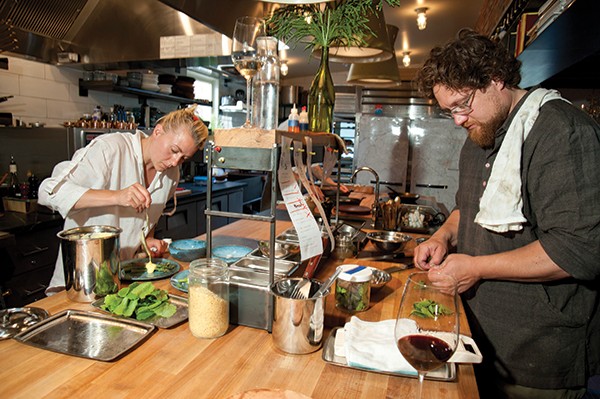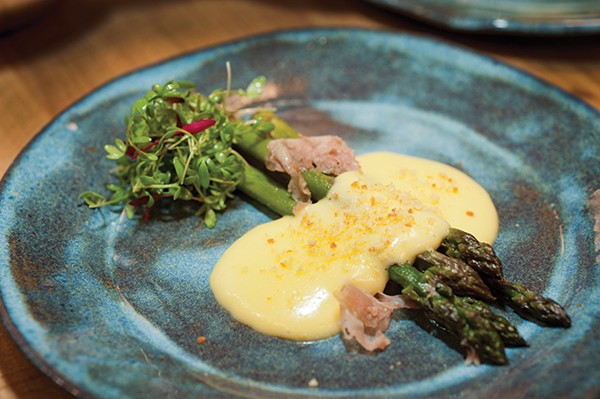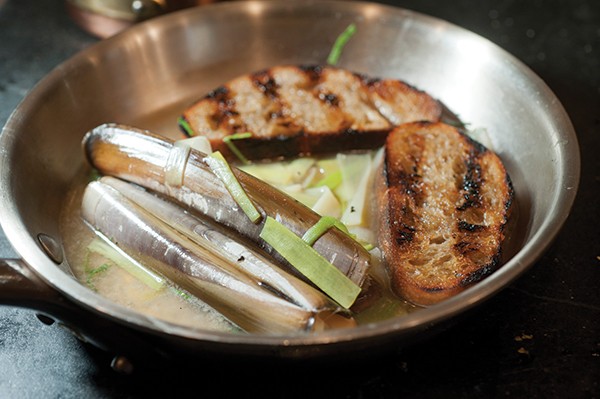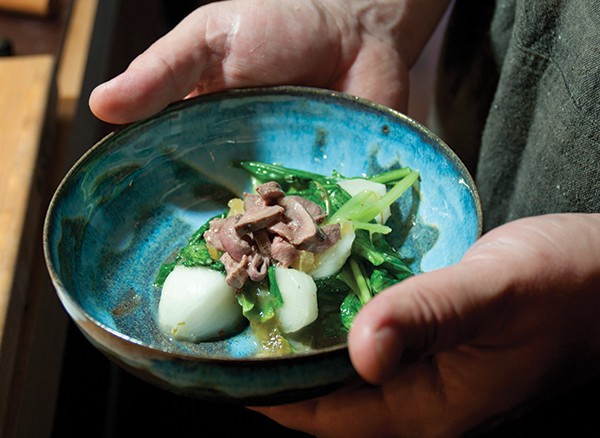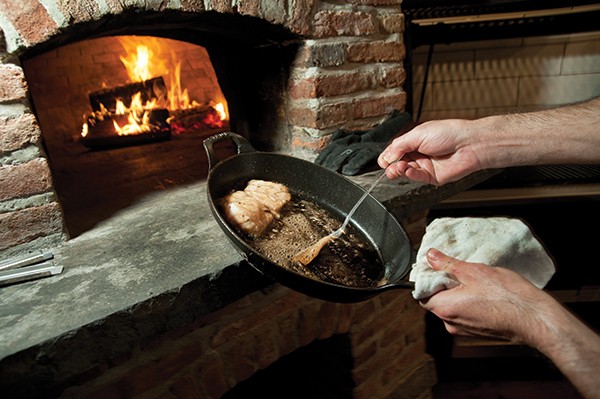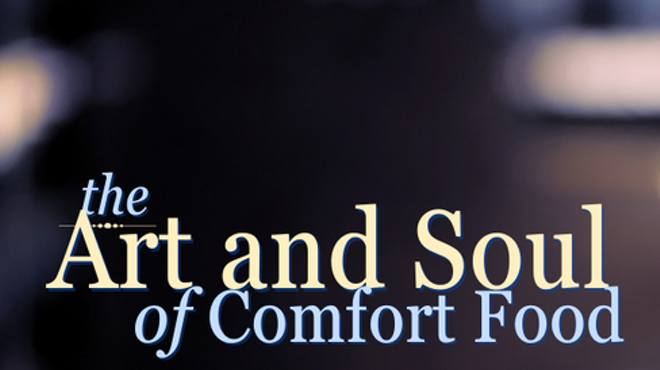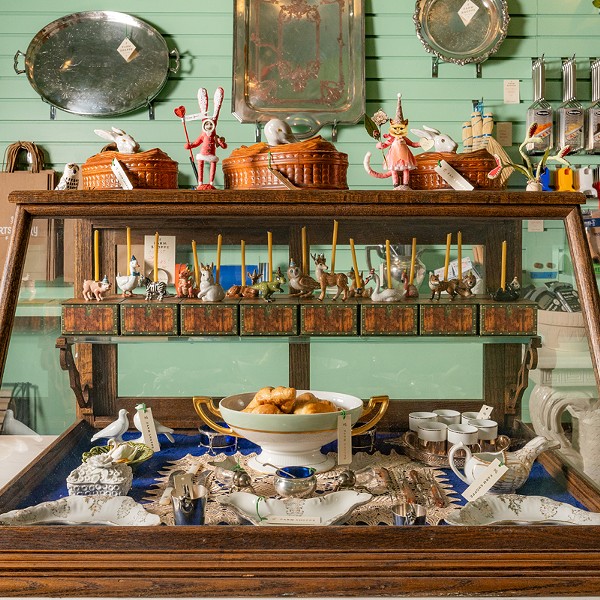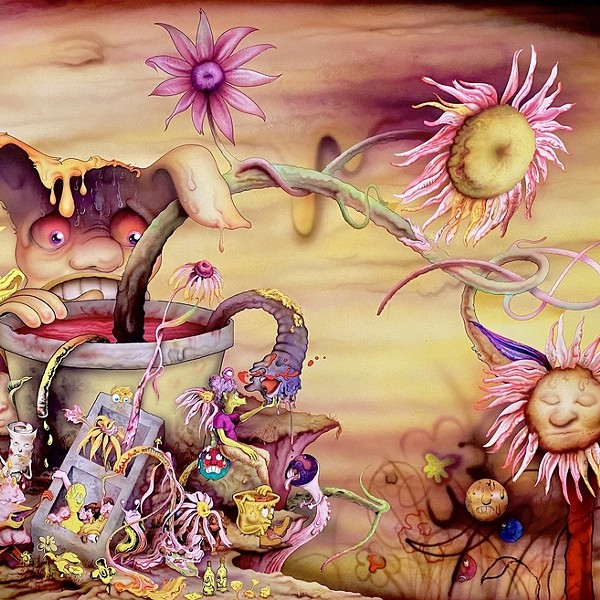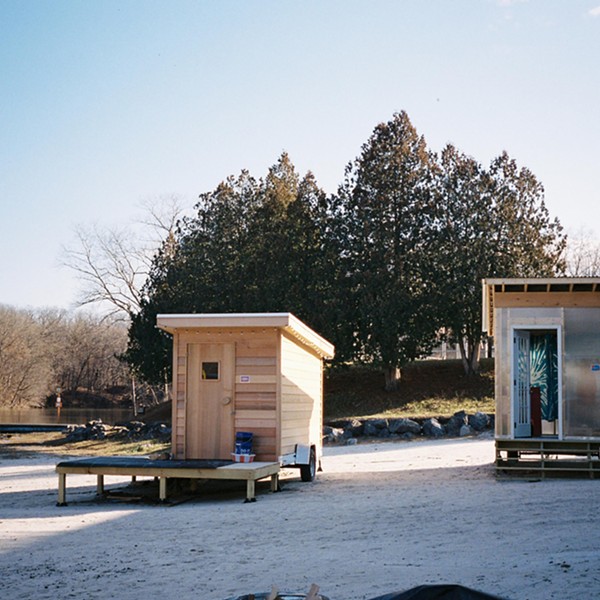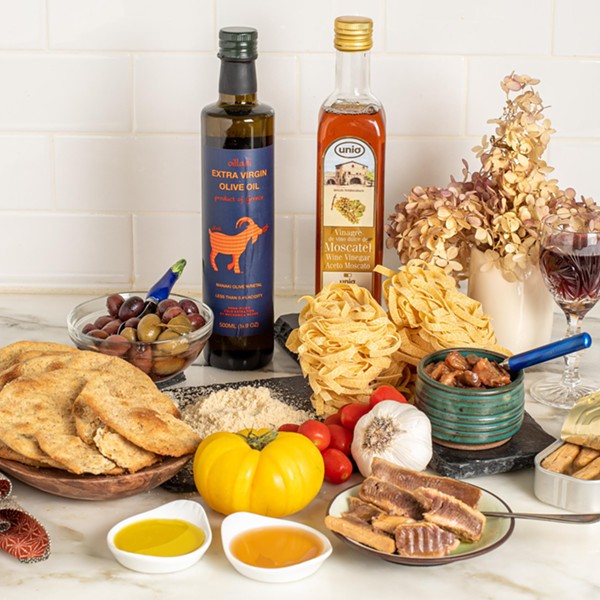In this month's installment of "Why Hudson Is Hipper than Your Town," we visit Fish & Game, the restaurant just opened by Zak Pelaccio, former wunderkind creator of the Malaysian-inspired Fatty Crab in Manhattan and Fatty 'Cue in Brooklyn, and his partner Jori Jayne Emde. The new venture is a world away from the brash, rock `n' roll mashups that made his name, the country estate to the Fatty franchises' noisy clubs. Years in the planning, it represents the distilled experience of both chefs before and since their move to Old Chatham six years ago. Right out of the gate, this is one of the most interesting restaurants in the region.
Almost all the food, with the usual exceptions, is produced in the area, much of it from within a 40-mile radius of Hudson. Fish & Game orders only whole animals, from trusted farms, and they use every possible piece from each one. The nose-to-tail ethos extends to all the ingredients; vegetable trimmings like carrot and turnip tops are macerated in alcohol and then distilled in a rotary evaporator to make essences that will find their way back into dishes and drinks in dozens of ways. The cycle of the seasons means that the roster of ingredients will change almost daily, along with the menu; the point of the restaurant is to embrace that flow and ride it, with great care and skill, toward a distinct culinary identity for the Hudson Valley.
Luxe & Louche
The brick building, once a blacksmith's shop, took longer to renovate than anticipated; the opening was originally slated for fall. Outside, there's a front patio with two-tops and metal chairs, and flickering gas lamps flank the entrance. The interior, designed by architect Michael Davis, handsomely straddles Hudson's trademark blend of rustic comfort and high-end refinement. Burgundy velvet burnout wallpaper looks straight out of a Victorian bordello, and the couches in the bar are seductively enveloping. The effect is both luxe and louche. The furnishings show the same local ethos as the ingredients: The tables and the bar were all built by woodworker Peter Heilman, and the plates and bowls were thrown by Caroline Wallner in Rhinebeck and Bob Golden in Amagansett.Two fireplaces provide ambiance, heat, and food; the one in the bar is equipped with an iron raclette and on the dining room hearth during recent meals a motorized rotisserie quietly revolved a couple of ducks, which gradually darkened to a seductive russet patina. Executive chef Kevin Pomplun, appearing periodically to baste the ducks with a citrus glaze, explained that they were poached first in maple sap with soy and fish sauces. The fireplaces, along with the wood-burning oven in the kitchen, were built from brick salvaged during the renovation. Substantial, sensual materials abound: tall stemware, heavy flatware, and soft linen napkins rolled into black steel rings.
Changing Tastes Each Day
Diners get a seven-course tasting menu—regular or vegetarian—for $68. On the back of the menu, printed anew every day, is a list of all the "farms and artisans" who produced ingredients for the meal. Small bowls of broth, deeply flavored, often appear as a first course: mushroom, or overwintered carrot (they convert starch to sugar when left underground) or "various game birds." On another night, those sweet carrots appear in a bowl, glazed with maple sap and garnished with a thin curl of cured and smoked pork jowl: überbacon.The salad, billed as "an assortment of leaves," is dressed with a whiff of their own barrel-aged fish sauce vinaigrette. It's masterful; the faint funk of fermented fish perfumes the squeaky leaves like it was spritzed in the air, cologne style, and the leaves sauntered through it on their way to the chunky walnut bowls in which they appear. A glimpse of vintage Pelaccio appears in the thick "vinaigrette" smeared on the plate under a petite ingot of charred Arctic char: spicy, sour, funky with some fermented seafood or another, it was a winning condiment that lingered in the mouth long after the plate was clean.
Another home run of a dish was the asparagus with duck egg hollandaise and grilled bread: nothing remarkable on paper, but a sublime symphony of the subtle overtones that result from top quality seasonal ingredients, handled properly, at the peak of freshness. What looked like a grilled lamb steak turned out to be a section of neck, cooked sous vide for hours until loin-tender and then finished on the fire, with a little copper pot of velvety potato purée for two alongside. While superbly tasty, the cut could have been a touch thicker, especially given the size of the bone in the middle.
In a welcome attempt to curry favor with this reviewer, Pelaccio brought out an extra dish, a puffy, Thai-style omelet studded with lamb brains, garnished with cilantro and a rhubarb-chili gastrique. He and Emde both regularly come out to tables, carrying food and chatting up friends and new visitors alike. Pelaccio chose his station, closest to the dining room, so he can easily bring out a treat to a regular or check on a new arrival. Dietary restrictions are happily accommodated; a guest who can't eat dairy received a rhubarb sorbet for dessert instead of the chocolate cremeaux. Both were delightful. The result, after seven well-paced courses, is the sensation of being neither full nor hungry, but perfectly sated.
Small-Name Wine List
The wine list is extensive, organized by varietal, and heavily European, reflecting the couple's preferences. It includes some idiosyncratic choices, and some high geekery: the ribolla gialla section, for example, which includes Josko Gravner's (aged in huge clay amphorae), is a who's who of the great makers in Friuli-Venezia-Giulia and Slovenia. There is only one Bordeaux, and just a couple of Californians, and no Australians; this list is admirably tilted away from the high-alcohol, food-crushing fruit bombs that overran the market in the last decade. There's nary a big-name trophy bottle to be found; they were all clearly chosen to accompany the food. "These are the wines we like to drink when we cook and eat," says Pelaccio of the list.With precious few bottles under $50, and most well north of that, it's worth asking questions if nothing jumps out at you. A standout red for $55 is Olivier Cousin's "Pur Breton," a naturally made cabernet franc that's tangy and joyous. Cousin is in legal trouble for his deliberate yet unauthorized use of the region, Anjou, on the label of a vin de table, a punk rock snook-cocking that makes the wine a good fit with the couple's irreverent personalities as well as their food.
How About a Schnort and a Schnack?
For those not feeling the tasting menu, there is à la carte dining at the bar, with a constantly changing array of options, including a couple of drink-and-snack pairings like the "Schnort & a Schnack," a shot of Mezcal and a skewered lamb kidney. The bar offers standards and original creations; the latter feature some local ingredients like honey and sumac and they were subjected to the same rigorous technical trials as the food. Notable examples include the Tainted Lady (blood orange-infused tequila, chartreuse, charred meyer lemon, honey) and Where There's Smoke, There's Fire (Mezcal, chili-infused aperol, sumac, and lime).The ever-shifting ingredients present a challenge, but Pelaccio says that's the whole idea. "We speak the same language, so when things come in we can quickly figure out what to do with them before service starts." The result is a lot like seeing a band live: "More of a jam band, I guess, where it's often great and sometimes good and hardly ever sucks." He grins at the absurdity of that last part. "If one of us is having an off night, the others help out and make it work." It's an incomplete simile, however; though Pelaccio frequently talks about "those meals that only happen once, but that you remember for the rest of your life," those magical confluences of time, place, company, and ingredients, he follows up with "It's not like music, because it can't be recorded. It's a shared experience, and then it's a memory."
The construction delays have only made the food better, allowing the kitchen staff to refine their techniques and collaborate on a growing repertoire of combinations. Among Emde's many specialties is presiding over the rapidly growing array of preserves: pickles, chutneys, vinegars, ferments, elixirs, decoctions, and fish and Worcestershire sauces—a bank of seasonal bounty, in rows of mason jars—provide inspiration and add bright jolts of flavor. The service, which unlike the kitchen staff did not spend all winter perfecting itself, is still attaining fluency, but any lingering kinks should be gone by the time this sees print.
The couple speak regularly about the beauty of the region, and the extraordinary farmers who work here; their stated goal is to do justice to the great riches of the place and its food, and to celebrate their lifestyle of diligent daily cooking and preservation. The virtuoso stoner aesthetic that made Pelaccio a success has matured into something subtler, and more collaborative, but no less pleasurable to eat. Rather than the almost violently addictive Malaysian sauces that compel one to wreck a bowl of crabs (and possibly a nice jacket in the process) this is grown-up food, presented elegantly, and sincerely striving to define the upper reaches of fine regional cuisine in the Hudson Valley.
Fish & Game
13 South Third Street, Hudson; (518) 822-1500.
Open for dinner Wednesday to Sunday, 5:30-10 pm.







